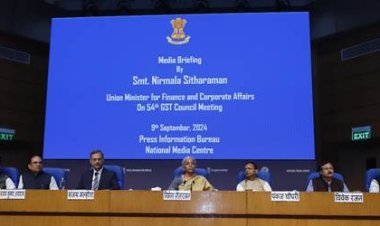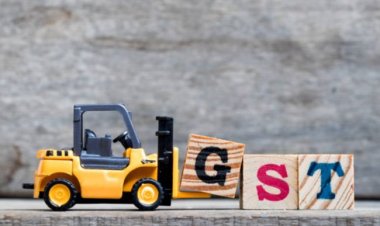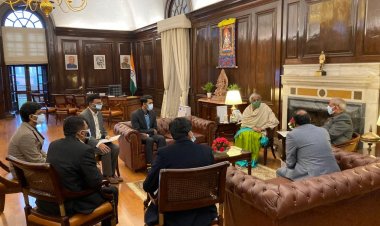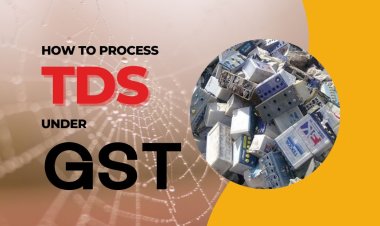MRAI requests Finance Minister to bring the Battery Scrap under Reverse Charge Mechanism to counter barrier to Lead Recycling Trade and Industry
The MRAI delegation Suggest to Hon’ble Finance Minister Mrs. Nirmala Seetharaman to bring the Battery Scrap Trade under Reverse Charge Mechanism (Rule 9(3)) of CGST Act 2017. According to MRAI, this will not only improve tax compliances but will also help in improving environmental compliance and EPR targets under BMHR rules as framed by MOEFCC. They further add that this may increase the annual tax collection by Rs 2000 Crore.
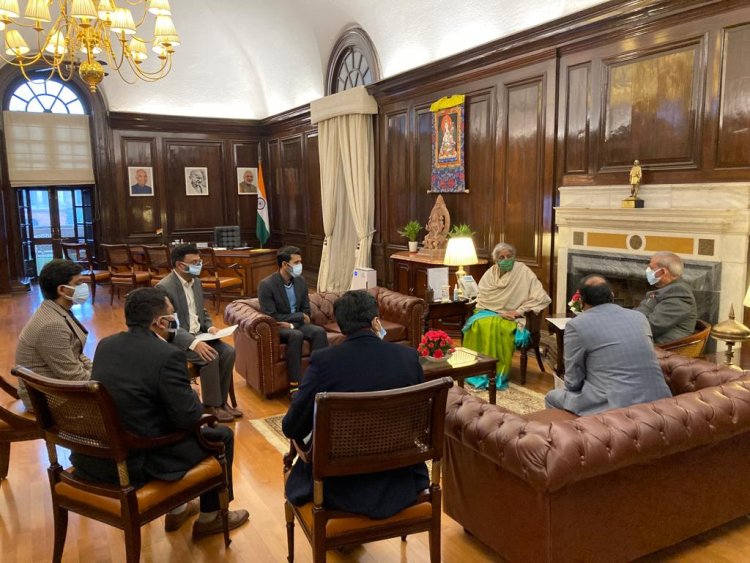
Sh. Navin Sharma, Director Material Recycling Association of India (MRAI) lead the Delegation under guidance of Jaipur Lok Sabha MP Sh. Ram Charan Bohra.
Talking to reporters after the meeting with the Finance Minister, Shri Naveen Sharma said that Mrs Sitharaman supported our suggestions and assured to place the matter in the GST Council meeting. Shri Naveen Sharma assured the Finance Minister that the move would generate additional revenue for the Government, improve environmental compliance, and reduce fake ITC.
In his memorandum, MRAI said that battery plays an important part in our everyday life. It serves as a backup source of power in telecommunications, public transport, solar energy, home UPS and medical procedures, besides giving cars a start. In addition, batteries can play an important role in achieving the goal of clean, reliable and affordable power services.
But due to some loopholes in the tax structure and non-compliance in accordance with the law of battery management and handling rules 2001, most of the collected scrap goes to unauthorized recycling units. These units not only damage tax collection but also cause deep damage to the environment. The health of the workers working in these works is also not taken care of. Thus, authorized lad recycling units face shortage of raw materials (scrap) due to access to unauthorised units of battery scrap. Therefore, it is very important that the collection of scrap batteries is ensured in a legal manner.
As per the MRAI Memorandum, Collection is the Biggest Challenge and Most categories of batteries sold in ratio of 20%:10%:70% to OEM: Bulk Consumers: Individual Consumers respectively. The biggest challenge is the collection of spent batteries from the individual category of consumers. Most of the quantities of this category is either not collected (pencil cells, button cell, Mobile batteries etc.) or if collected then it is not passed to Registered recycling Units (In case of Lead Acid Batteries).
Ministry of MOEFCC has framed rules known as BMHR (Batteries Management and Handling Rules 2001) to ensure proper collection and recycling of Used Lead Acid Batteries but due to poor execution of these rules, the formal recycling targets could not get the share of even 25% of total available spent batteries in last 20 years. Now the MOEFCC is framing new rules known has BWMR 2020 (Batteries Waste Management Rules 2020) covering all types of batteries with the EPR targets for battery manufacturers.
MRAI highlighted that in case of Used Lead Acid Batteries the collection from individual consumers is almost 100% but only 20% is collected and recycled in formal way and the rest volumes are siphoned to informal channels that causes not only the loss of taxes, but it also creates threat to environment. It also initiates the cycle of fake Bills.
MRAI estimate that in case of Lead Acid Batteries, the approximate 1.20 million tons of End-Of-Life Lead Acid Batteries Scrap generated from individual consumers and over 85% quantity with approximate Value of Rs 10000 Crore is siphoned and this causes annual Tax revenue Loss of over Rs 2000 Crore.
Since the nature of End-of-Life Batteries is of Hazardous hence this fall amongst the very few items which are regulated by MOEFCC and has defined stakeholders (manufacturer, producer, collection-centre, importer, re-conditioner, re-furbisher, dismantler, assembler, dealer, recycler, auctioneer, vehicle service centre, consumer and bulk consumer) and each stakeholder (except consumers) has to get register them under the provisions of BMHR 2001/BWMR 2020.
MRAI suggested to bring the supply of End-Of-Life Batteries (HSN8548 now HSN 8549 ) under Reverse Charge Mechanism (RCM) as per section 9(3) of CGST Act 2017 so tax is paid via cash ledger rather than Input Tax Claims (which increase the possibility of fraud) and any supply of Battery Scrap (HSN8548) from any unregistered person should fall under RCM only.
According to memorandum, this will not only ensure full compliance of the Battery Waste Management Rules but also will end the fraudulent ITC and lead the way to environmentally sound recycling along with Tax Revenue of over Rs 2000 Crore to Govt.
MRAI further draw the attention of FM that the entire industry is struggling due to fraudulent act and fake invoices since inception of GST regime thus affecting flow of raw material and manufacturing operations in formal sector. In absence of immediate action, it can affect not only to the industry and the economy in general but also to the environment as well.
MRAI-Material Recycling Association of India (MRAI) is the apex National Association of India, representing the interest of the recycling industry with over 1200 members, including most Regional Trade/Product Associations. Our collective strength comprises of over 20,000 Small, Medium and Large enterprises, directly and indirectly employing 25 lakh people, spanning over recycling and recyclable commodities including Metals (both Ferrous & Non-Ferrous), Plastic, Paper, E-waste, Tyre & Rubber, Textile, Glass, Automobile, Construction & Demolition Waste and Water.













